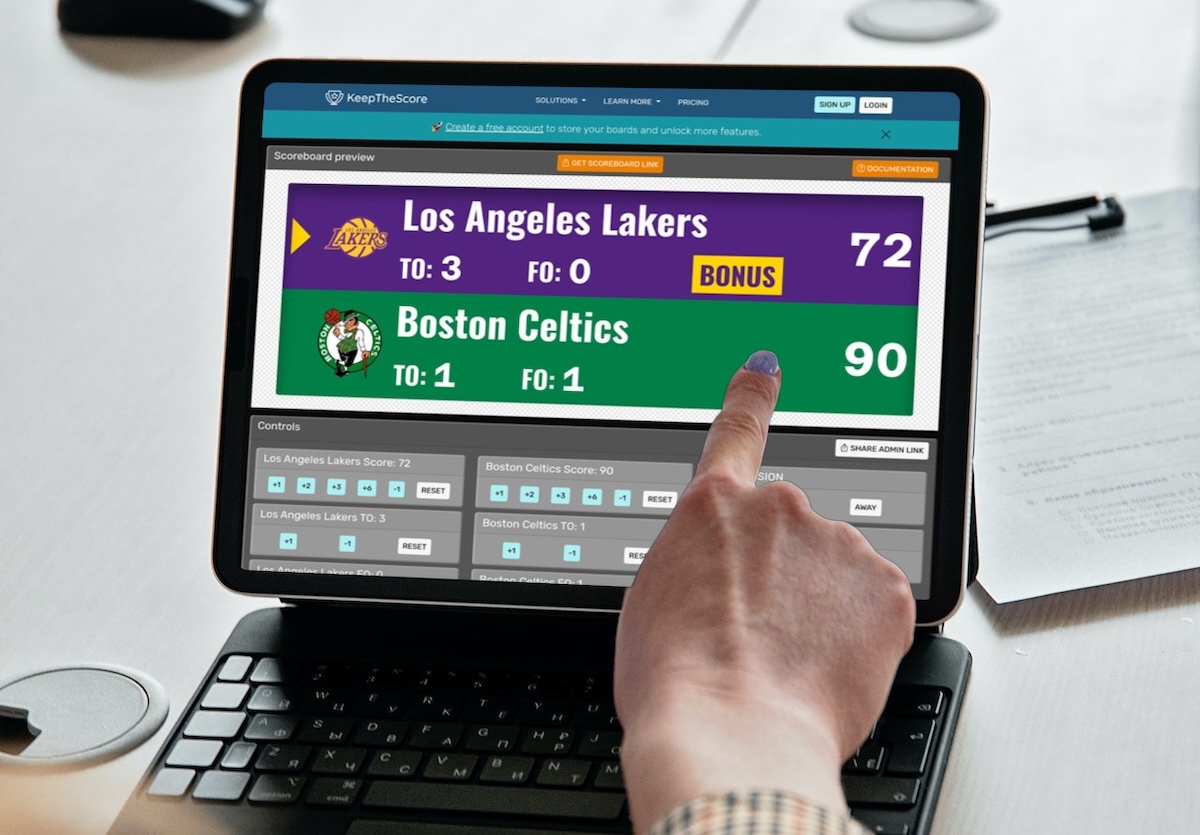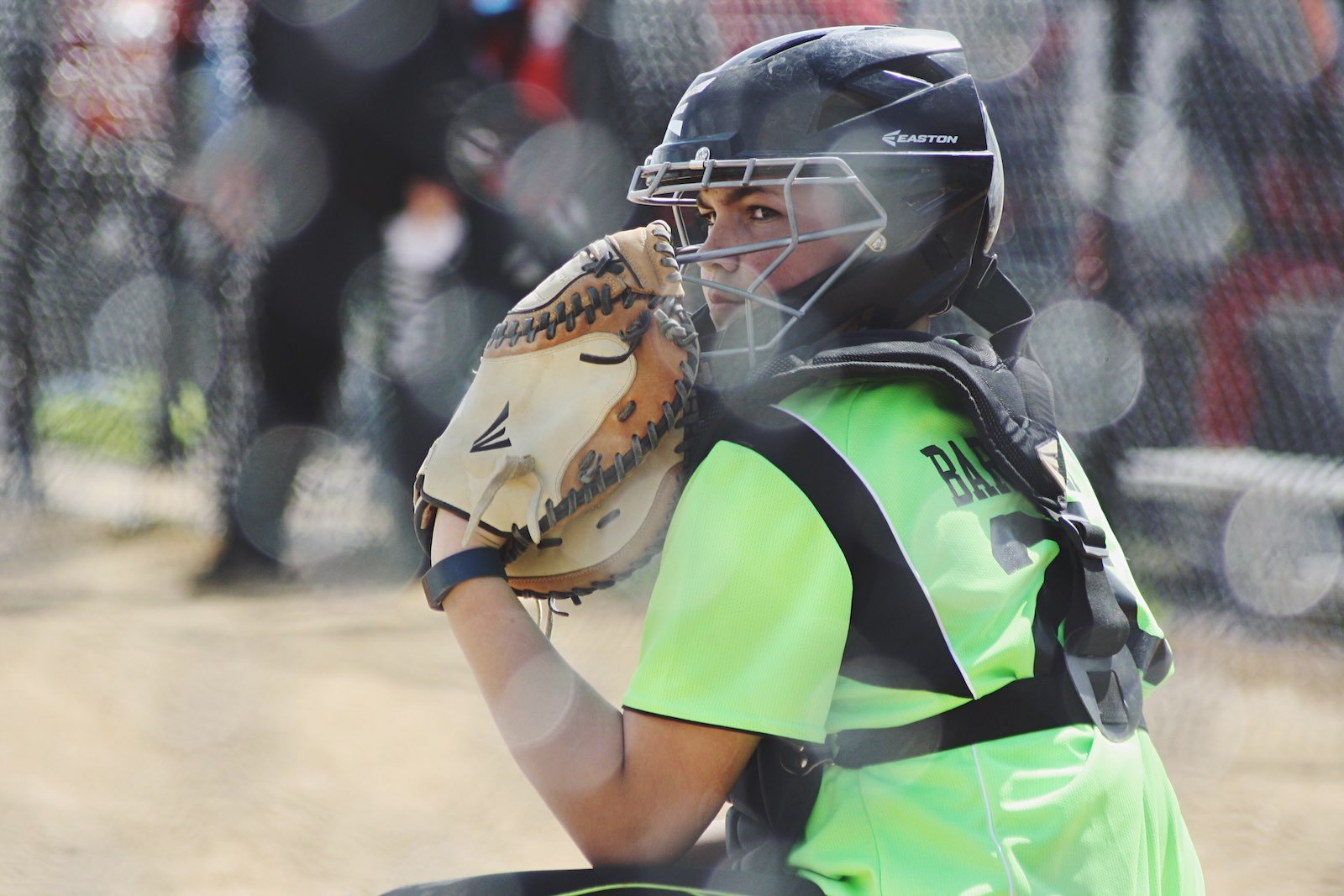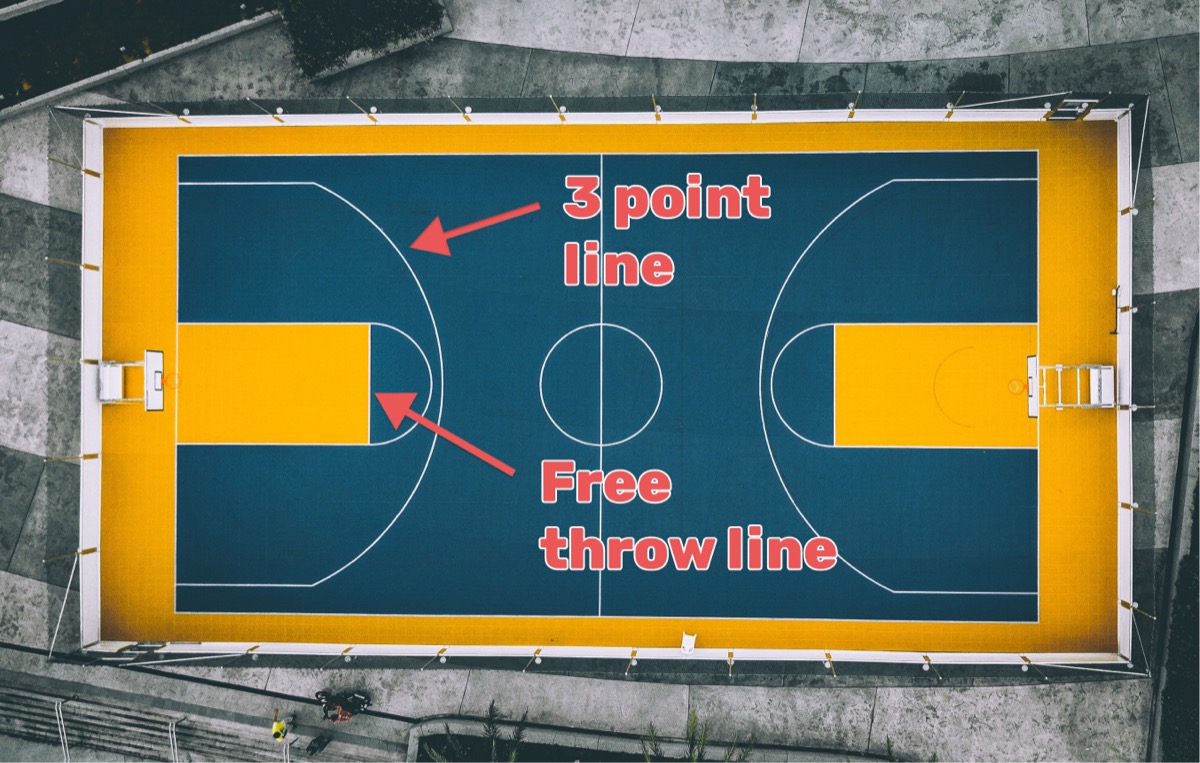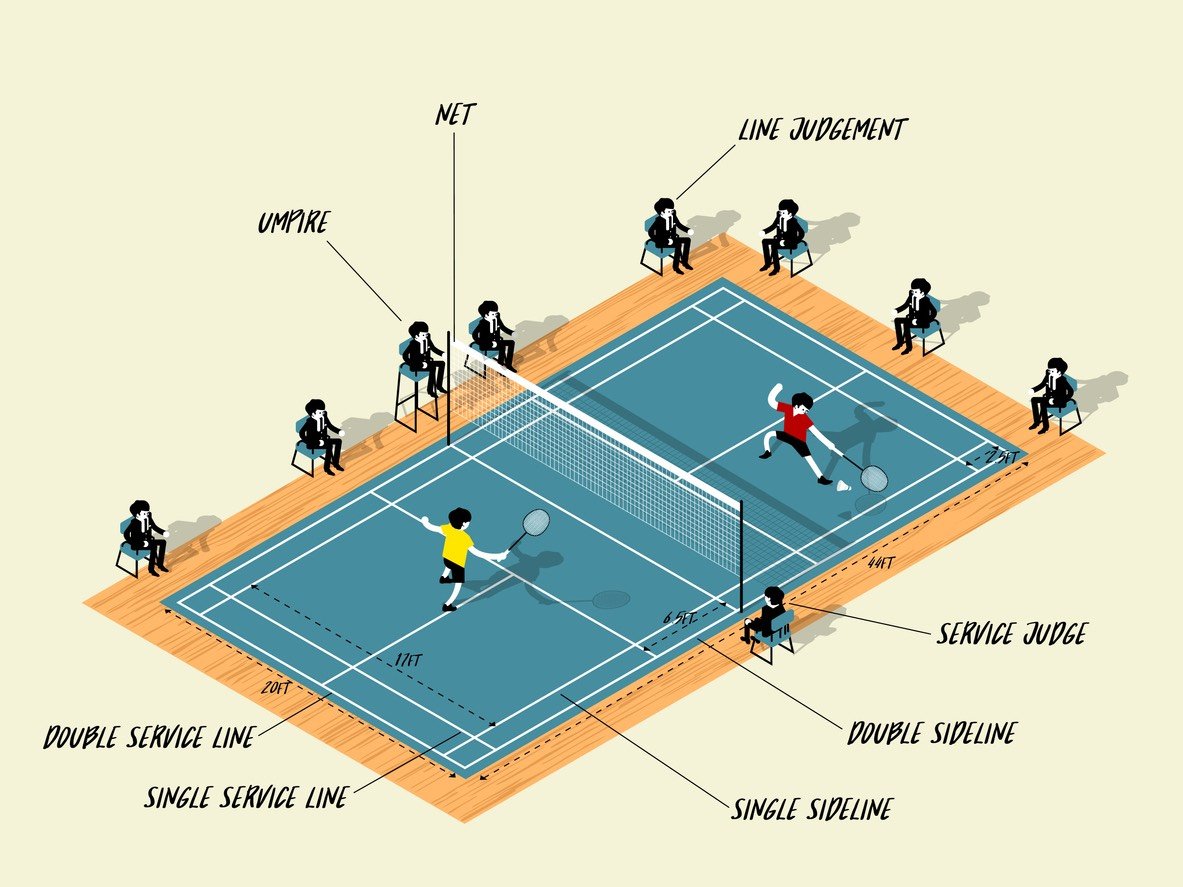Baseball is one of the most popular sports in the world, and while its scoring system is unique, it shares some similarities with other field sports like cricket and softball. For beginners, baseball scoring can be quite confusing. But with a little bit of guidance, it's actually quite simple. In this article, we'll explore the basics of baseball scoring, and give you all the information you need to understand how it works.
 A baseball pitch
A baseball pitch
The basic aim in baseball is for players to score by hitting the ball and running all 4 bases to end up back on the home plate. Let's go into the details of how this scoring system works.
Innings
An inning is simply a period of play. Each inning has 2 halves, called the "top" and "bottom". The top half of the inning is when the visiting team (aka "road team") bats and can score, while the bottom half is when the home team bats and scores. When a team is not batting, they have nine position players who defend, called fielders.
The number of innings in a game varies by level, similar to how softball and other sports adjust game length based on competition level.
- In Major League Baseball, a game is played over nine innings.
- In the minor leagues, a game is played over seven innings.
- In high school and college baseball, a game is played over seven innings.
- In Little League, a game is played over six innings.

In the event of a tie after the standard number of innings, extra innings are played until one team scores more runs, similar to overtime. During extra innings, teams alternate between batting and fielding. If the visiting team gains the lead in the top half of an extra inning, the home team has the opportunity to tie or take the lead during their turn at bat in the bottom half. Conversely, if the home team takes the lead in the bottom half of an extra inning, the game immediately ends, as the away team no longer has a chance to score before the inning concludes. Walk-off hits are game-ending hits that occur during the bottom of the ninth inning or extra innings.
How to Score in Baseball
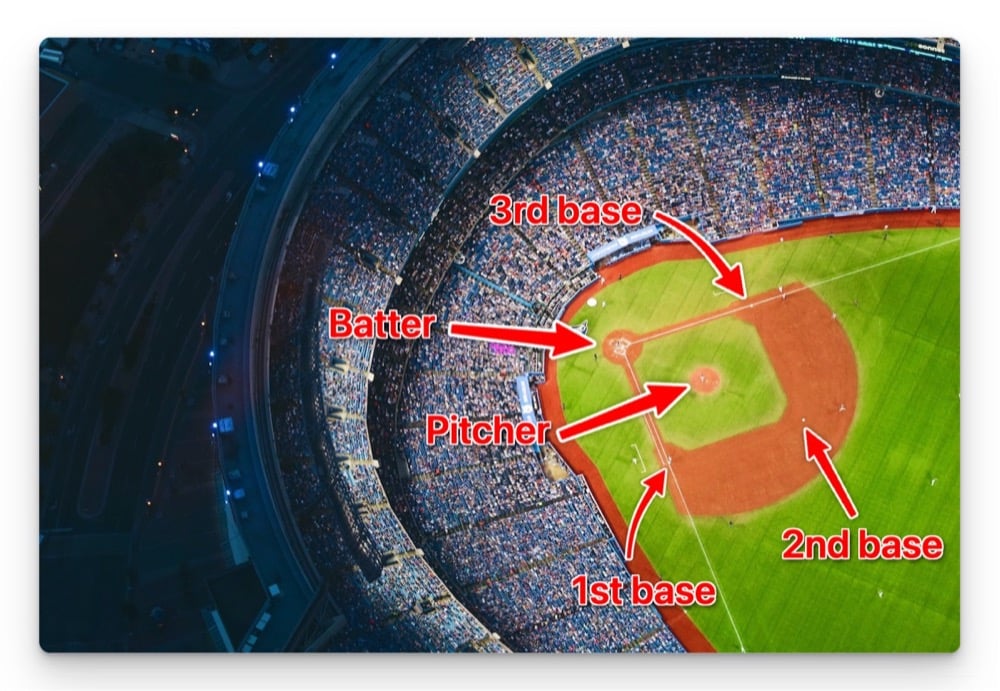 The baseball diamond where scoring takes place
The baseball diamond where scoring takes place
In baseball, scoring revolves around players successfully hitting the ball and running the bases. To understand this process better, let's first look at the different types of hits a batter can achieve.
Types of Hits
- Single: Batter reaches first base safely
- Double: Batter reaches second base safely
- Triple: Batter reaches third base safely
- Home Run: Batter hits the ball out of the playing field in fair territory
Scoring a Run
- The pitcher throws the ball, and the batter attempts to hit it into the field of play.
- If successful, the batter becomes a runner and tries to reach first base.
- The runner must touch each base in order: first, second, third, and finally home plate.
- If the runner touches all bases and returns to home plate before the fielders get the ball there, he scores a run for his team.
Home Runs Explained
A home run occurs when the batter hits the ball out of the playing field in fair territory. This automatically scores a run for the batter and any runners already on base.
Common Scoring Scenarios Explained
Let's walk through typical ways runs are scored in baseball:
The Solo Home Run
- Batter hits ball over outfield fence
- Touches all bases in order
- Result: 1 run scored
Multiple Runners Scoring
- Bases loaded situation (runners on 1st, 2nd, and 3rd)
- Batter hits double to outfield
- Two runners score, one advances to third
- Result: 2 runs scored
Small Ball Scoring
- Runner on first base
- Batter bunts successfully
- Next batter singles to outfield
- Runner scores from second
- Result: 1 run scored
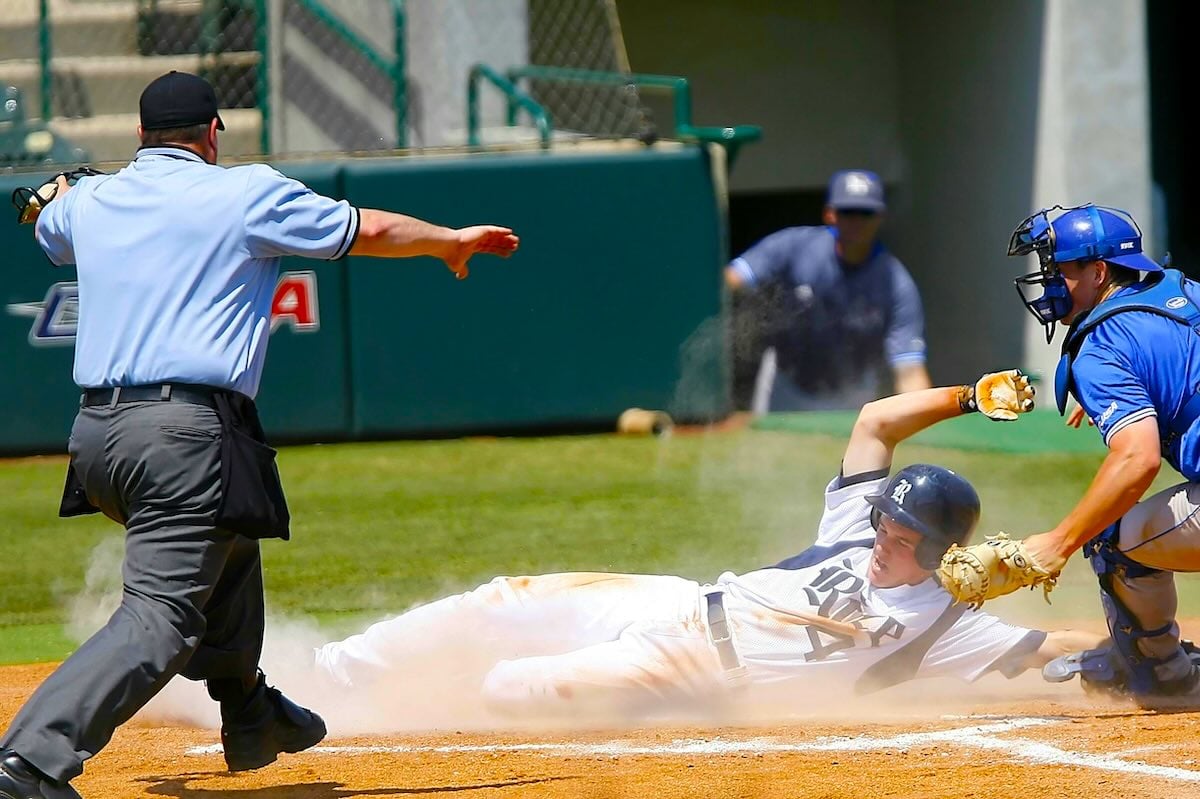 A close-run thing in baseball
A close-run thing in baseball
What is shown on a baseball scoreboard?
A baseball scoreboard serves as the game's central information hub, providing fans and players with vital information about the game's progress. Let's explore what you'll typically find on a baseball scoreboard.

Core Game Information
Every baseball scoreboard prominently displays three fundamental statistics: runs, hits, and errors (R-H-E). The runs column shows each team's score, while hits tracks all successful base hits. The errors column displays fielding mistakes that could affect scoring decisions.
Team names or logos are clearly shown, with the visiting team typically appearing on top and the home team on the bottom. This traditional arrangement helps fans quickly identify their team's statistics.
The inning-by-inning line score shows how runs were scored throughout the game. Empty squares indicate upcoming innings, while an "X" is often shown when the bottom of the last inning isn't needed because the home team has already won.
Current Game Situation
Modern scoreboards use illuminated displays to show:
- Which bases currently have runners (usually shown as illuminated diamonds)
- The current count on the batter (balls and strikes)
- Number of outs in the current inning
This allows fans to quickly understand the current state of play and potential scoring opportunities.
Advanced Features
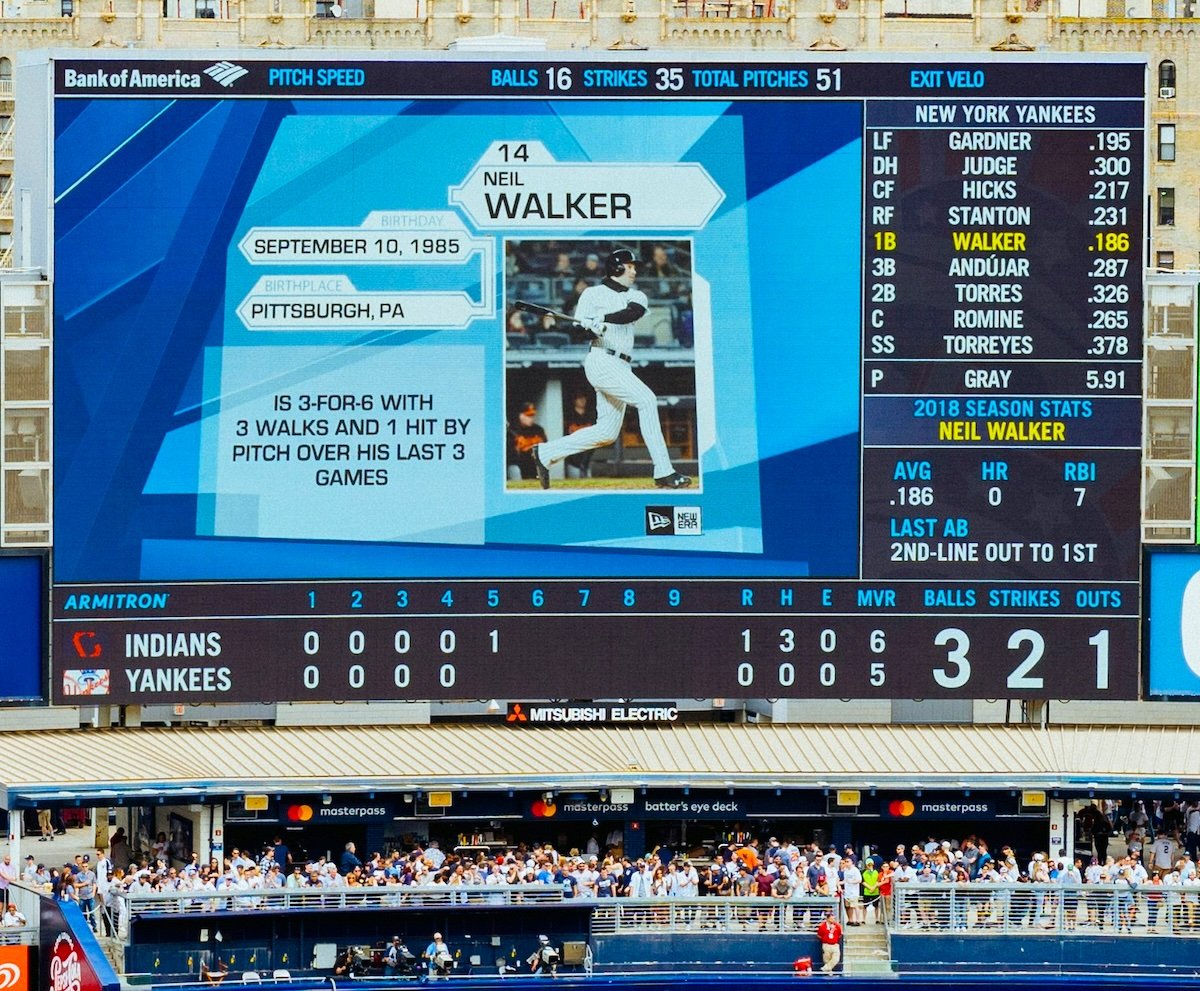 A modern digital scoreboard displaying advanced statistics and player information in the Yankee stadium
A modern digital scoreboard displaying advanced statistics and player information in the Yankee stadium
Today's electronic scoreboards often include additional information such as:
- Current batter's name and statistics
- Pitcher's name and pitch count
- Game time and duration
- Weather conditions
- Advanced statistics like batting averages and ERA
While modern scoreboards offer these enhanced features, some historic venues like Wrigley Field maintain traditional manual scoreboards. These classic boards focus on essential game information and provide a nostalgic connection to baseball's rich history.
Test Your Scoring Knowledge
Try these scenarios to test your understanding of baseball scoring:
Scenario 1: The Complicated Double
A batter hits a ball to right field with a runner on first base. The fielder misplays the ball, allowing the runner to score and the batter to reach third base.
Question: How would this be scored?
Scenario 2: The Unconventional Double Play
A batter hits a sharp ground ball to the third baseman with runners on first and second base and no outs. The third baseman steps on third to force out the runner from second, then throws wildly to first base. The ball goes out of play, and the batter-runner is awarded second base while the runner from first advances to third.
Question: How would this be scored?
Scenario 3: The Dropped Fly Ball Dilemma
With bases loaded and one out, the batter hits a routine fly ball to center field. The outfielder drops the ball, allowing two runners to score and the batter to reach second base.
Question: How would this be scored?
Using scoreboard software
For teams and leagues operating on a budget, software-based scoring solutions offer an excellent alternative to expensive permanent scoreboards. By combining scoring software with standard hardware like a TV or projector, any organization can create a professional-looking scoring display.
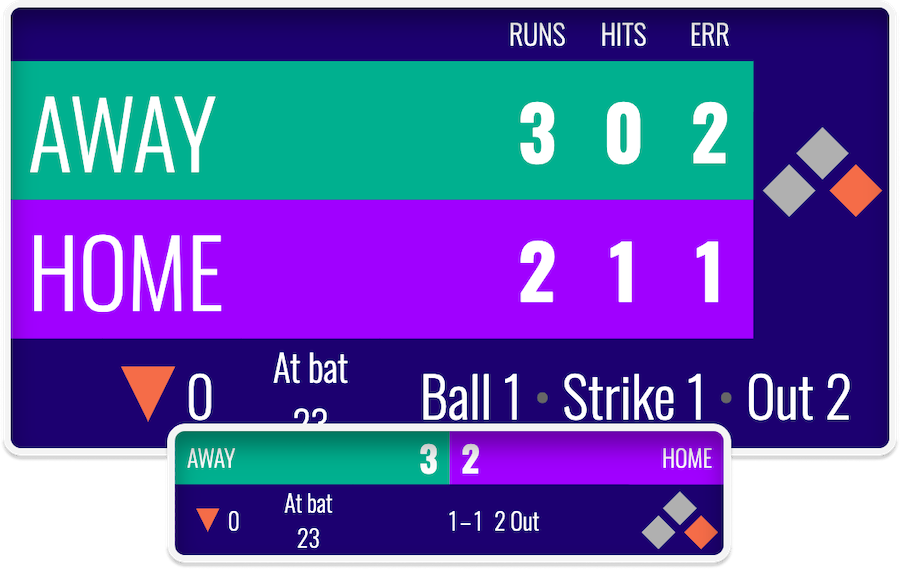 A baseball scoreboard from Keepthescore.com with 2 different layouts
A baseball scoreboard from Keepthescore.com with 2 different layouts
Keepthescore.com is the leading platform for online scoreboards and provides a dedicated baseball scoreboard.
The scoreboard can be managed from any location using a mobile phone or tablet, allowing scorekeepers to maintain accurate scoring while moving around the field or operating from a press box.
Quick Tips for Scoreboard Operation
Pre-game Setup
- Test all displays before the game starts
- Verify team names and starting lineups
- Clear any previous game data
During the Game
- Update scores immediately after runs score
- Keep count display current with each pitch
- Update base runners as they advance or score
Post-game
- Save final statistics if using digital system
- Clear the board for next game
- Back up any important data
This comprehensive approach to scoreboard management helps ensure smooth game operations and keeps fans informed throughout the contest.
Related Sports Scoring Guides
If you enjoy baseball scoring, you might also be interested in:
- Softball Scoring - A similar sport with some key scoring differences
- Cricket Scoring - Another bat-and-ball sport with its own unique scoring system

See Also
- How to Create a Digital Scoreboard - Set up your own electronic display
- Live Streaming Your Games - Add a professional scoreboard overlay to your broadcasts, similar to score bugs used in MLB broadcasts
- Best Portable Scoreboards - Physical scoreboard options for your games
